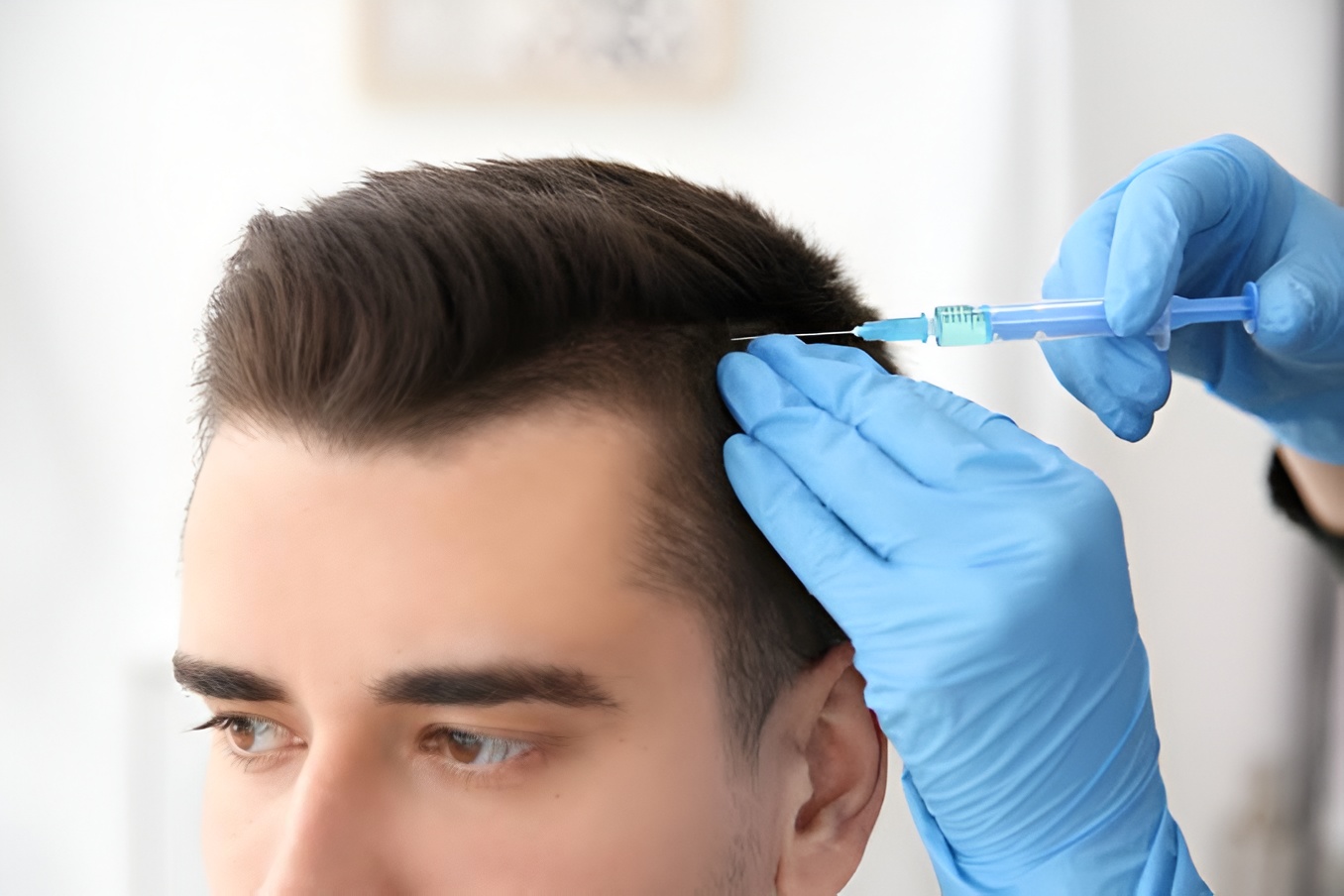The question, “What is the best hair transplant clinic in Turkey?” is increasingly common among Nigerians exploring medical tourism. However, the answer is not a simple recommendation. The “best” clinic is a subjective choice that depends entirely on a patient’s individual needs, diligent research, and a trusted medical relationship.
This report is an independent guide intended to empower prospective patients with the knowledge to make a safe and informed decision. It does not endorse any specific clinic.
Turkey has firmly established itself as a global capital for health tourism, attracting thousands of international patients annually for procedures like hair restoration. For many Nigerians, it presents a compelling option. But what are the factors behind its popularity, and more importantly, how can one navigate the vast market to find a credible and safe provider? This guide provides a detailed analysis.
Section 1: Why Turkey Has Become a Global Hub for Hair Restoration
Turkey’s reputation as a leader in the hair transplant industry is built on a combination of key factors that appeal to a global audience, including many from Nigeria.
1. Cost-Effectiveness: A Major Draw
The primary attraction for many is the cost. A hair transplant in Turkey is often significantly more affordable than in Europe or North America. This is due to lower operational costs, a competitive market, and favourable exchange rates. However, experts caution that cost should never be the sole deciding factor in a medical procedure.
2. Experienced Surgeons and High Procedural Volume
Top Turkish clinics perform hair transplant procedures daily. This high volume translates into immense experience for surgeons and their medical teams. Many leading doctors have international training and are well-versed in the latest research from medical journals. This experience is vital for achieving a natural-looking hairline that complements the patient’s facial structure.
3. Access to Advanced Medical Technology (FUE & DHI)
Reputable clinics in Turkey invest heavily in state-of-the-art technology. The most common advanced techniques are FUE (Follicular Unit Extraction) and DHI (Direct Hair Implantation). FUE involves extracting individual hair follicles and implanting them into recipient areas, while DHI uses a specialised pen-like instrument (a Choi pen) to implant follicles directly. These modern methods are minimally invasive, promote faster healing, and deliver natural-looking results.
4. The Rise of All-Inclusive Service Packages
To streamline the experience for international patients, most clinics offer all-inclusive packages. These typically cover:
- VIP airport, hotel, and clinic transfers.
- Accommodation in high-quality hotels.
- Translator services.
- Post-operative medications and care products.
These packages allow patients to focus on their procedure and recovery. It is advisable to ensure any associated travel agency is certified by TÜRSAB (Association of Turkish Travel Agencies).
Section 2: Due Diligence: How to Identify a Reputable Clinic
With hundreds of clinics marketing their services, thorough vetting is crucial. Focusing on the following criteria can help distinguish professional medical establishments from risky operators.
1. The Doctor’s Role is Non-Negotiable
A hair transplant is a surgical procedure that must be overseen and performed by a qualified medical doctor, ideally a Plastic Surgeon or Dermatologist. A major red flag is clinics where technicians with limited qualifications perform the entire operation. In a reputable clinic:
- You will have a consultation with the actual doctor who will perform the surgery.
- The doctor will design your hairline and lead the surgical planning.
- The doctor performs the critical stages of the surgery, such as making the incisions (channel opening).
- The technical team consists of experienced, certified professionals working under the doctor’s direct supervision.
2. Verify Clinic Accreditation and Hygiene Standards
The procedure must be conducted in a sterile, clinical environment to prevent infections and complications.
- Ministry of Health License: The facility must be officially licensed by the Turkish Ministry of Health. Avoid any unlicensed or “back-alley” operations.
- Hygiene and Sterilisation: The operating theatre must adhere to strict hygiene protocols, and all instruments must be properly sterilised. Procedures conducted in a fully-equipped hospital are preferable, as they offer comprehensive support in case of any medical emergencies.
3. Personalised Treatment Planning
There is no “one-size-fits-all” solution in hair restoration. A credible clinic will not push a single technique on every patient. Instead, they will conduct a thorough assessment of your hair type, the extent of hair loss, and the health of your donor area to create a customised treatment plan. They should provide a clear, scientific rationale for recommending either FUE or DHI for your specific case.
4. Scrutinising Patient Results and Testimonials
Clinic websites and social media are marketing tools. It is essential to look for authentic proof of their work:
- Realistic Before-and-After Photos: Request to see a portfolio of unedited photos showing results from various angles and in consistent lighting. Results at 6 and 12 months post-operation are more indicative of the final outcome than photos taken immediately after the procedure.
- Video Testimonials: These can offer more genuine insight than written reviews.
- Independent Forums: While online reviews can be helpful, be aware that some may be fake. Cross-reference information from multiple independent sources.
5. The Importance of Post-Operative Care and Follow-Up
A clinic’s responsibility does not end when the surgery is over. The long-term success of a hair transplant depends heavily on proper aftercare. A reliable clinic will provide:
- Detailed instructions for post-operative care, including the first wash.
- A clear explanation of the recovery process, including normal phases like “shock loss” and scabbing.
- A dedicated contact person for follow-up questions.
- A schedule for follow-up, requesting progress photos at key intervals (e.g., 1, 3, 6, and 12 months) to monitor your results.
Section 3: Understanding the Hair Transplant Journey: A Step-by-Step Overview
Knowing what to expect can significantly reduce anxiety. The process generally follows these key stages:
- Initial Consultation and Assessment: This is often done remotely with photographs. The medical team assesses your hair loss, evaluates your donor area, estimates the number of grafts needed, and designs a suitable hairline.
- The Day of the Procedure: The surgery typically lasts 6-8 hours. It includes preparation, administration of local anaesthesia, extraction of grafts, creation of recipient channels (in FUE), and implantation of the grafts.
- Immediate Post-Operative Period (First 10 Days): The scalp will be bandaged. The first wash is usually performed at the clinic 1-3 days later. Scabbing and some tenderness in the donor area are normal during this time.
- The “Shock Loss” Phase (Weeks 2-8): Several weeks after the procedure, most of the transplanted hairs will fall out. This is a normal and expected part of the cycle. The hair follicles remain healthy and dormant beneath the scalp.
- Early Growth Stage (Months 3-6): New hair will begin to grow. Initially, it may be fine and sparse, but it will gradually thicken and strengthen over time.
- Full Maturation and Final Results (12-18 Months): It takes 12 to 18 months for the transplanted hair to fully mature and for the final density and texture to become apparent. Patience is essential.
Section 4: 10 Essential Questions to Ask Before Choosing a Clinic
During your consultation, asking direct questions is the best way to vet a clinic’s professionalism and transparency.
- Who is the lead surgeon? What are their specific qualifications and years of experience in hair restoration?
- Will the doctor personally perform the critical parts of the surgery, such as making the incisions and designing the hairline?
- Is your clinic officially licensed by the Turkish Ministry of Health? Will the procedure take place in a licensed hospital?
- Which technique (FUE, DHI) do you recommend for my case, and what is the medical reason for this choice?
- How do you calculate the estimated number of grafts? Is this a realistic figure for my donor area?
- Can you provide a portfolio of unedited before-and-after photos of patients with a similar hair type and degree of hair loss to mine?
- What is the final, all-inclusive cost? Are there any potential hidden fees or extra charges?
- What does your post-operative care plan include, especially for international patients once they return home?
- What is your protocol for managing any potential complications during or after the surgery?
- Do you provide a written certificate of guarantee? What are its specific terms and conditions?
Clear, confident, and verifiable answers to these questions are a strong indicator of a trustworthy and professional clinic.
Conclusion: Making an Informed and Personal Decision
In the search for the best hair transplant clinic in Turkey, it is crucial to remember that this is a significant medical decision. The right choice is a clinic that is medically sound, transparent, and staffed by a qualified surgeon you trust.
While Turkey offers world-class options at competitive prices, the onus is on the patient to conduct thorough due diligence. Prioritise safety, credentials, and the surgeon’s expertise over price alone. By taking a careful, well-researched approach, Nigerians can safely and successfully leverage the opportunities offered by medical tourism to achieve their desired hair restoration results.
Disclaimer: This article is for informational purposes only and is not a substitute for professional medical advice. Individuals considering a hair transplant should consult with a qualified doctor or healthcare professional to address their specific medical condition and make an informed decision.






